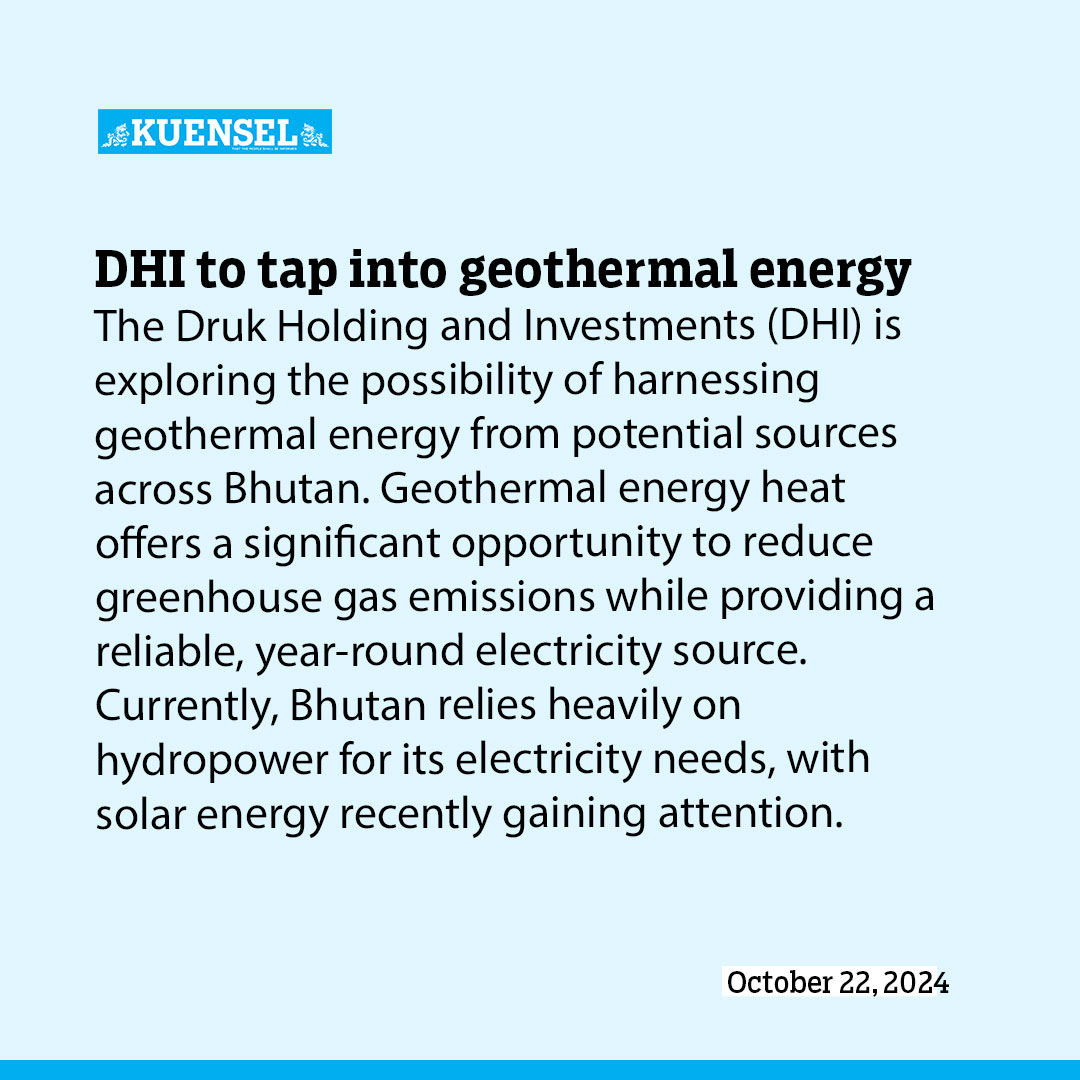Dechen Dolkar
The Druk Holding and Investments (DHI) is exploring the possibility of harnessing geothermal energy from potential sources across Bhutan.
Geothermal energy heat offers a significant opportunity to reduce greenhouse gas emissions while providing a reliable, year-round electricity source.
Currently, Bhutan relies heavily on hydropower for its electricity needs, with solar energy recently gaining attention. To diversify the country’s renewable energy portfolio, the DHI is now looking to geothermal energy as a complementary resource.
An official from Department of Investment under DHI said that the consistent availability of geothermal energy throughout the year could bolster Bhutan’s energy security. “If the assessment reveals positive results, geothermal energy will complement hydropower, especially during periods of low river flow, and help reduce energy imports,” the official said.
The DHI has identified about 10 hot spring sites for geothermal exploration, which include notable locations like Gasa Tshachu, Gelephu Tshachu, Koma Tshachu, Chubu Tshachu, Duenmang Tshachu, Dhur Tshachu (Bumthang), Gayza Tshachu (Gasa), Pasanglum Tshachu (Lhuntse), Yoenten Kuenjung Tshachu (Lhuntse), and Duemang Tshachu (Zhemgang).
The DHI is collaborating with the World Bank’s Energy Sector Management Assistance Program and Icelandic GeoSurvey (ISOR) to effectively assess and develop these geothermal resources.
The partnership aims to conduct a preliminary assessment of Bhutan’s geothermal potential, provide recommendations for development, and facilitate knowledge sharing and capacity building.
Recently, two geothermal experts from the World Bank/ISOR visited Gasa and Gelephu Tsachu for site assessments and sample collection.
They conducted sessions with the DHI and government officials, sharing Iceland’s experience with geothermal energy and offering training on sample collection techniques.
The DHI official said that the analysis of some samples has already begun, and early results suggest the potential for power generation at some sites, while others may be better suited for direct uses like heating.
“However, further studies are needed to validate these findings. Sample collection from other hot spring sites is ongoing and will be analysed to get a more comprehensive picture of Bhutan’s geothermal potential,” the official said.
This initiative aligns with Bhutan’s broader development goals, including the Gelephu Mindfulness City (GMC) project.
The official said that the presence of hot springs in the GMC area presents opportunities to tap geothermal energy for various needs in the city, including heating, cooling, and other industrial applications.
Geothermal energy has multiple applications, including electricity generation, heating, cooling, and industrial processes like food drying and greenhouse heating.
Geothermal hot springs are also popular tourist attractions in many regions and could add value to Bhutan’s tourism industry.
The DHI is also exploring the potential for partnerships and investment opportunities in geothermal energy. This investment could drive innovation and create substantial employment opportunities for local communities.
Apart from electricity generation, the DHI is also in discussions with partners like the World Bank and ISOR in exploring geothermal energy for spas, heating and cooling applications, and advanced geothermal technologies.
The DHI official said that the actual energy available from these geothermal sources will only be determined after detailed studies are completed.


